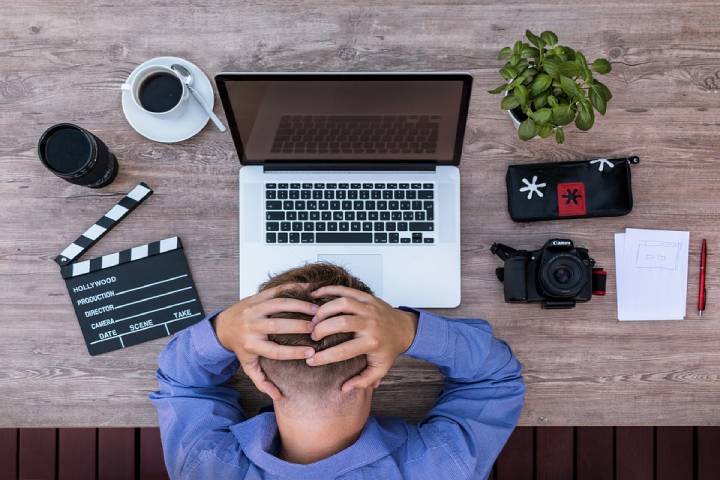Computer
How to optimize your PCs performance
How to optimize your PCs performance. Uninstall Unnecessary Software, Restrict The Programs at StartUp, Use a Tune-up Utility, Add More RAM

At some point in its life, your computer will experience slower speeds. However, before you go ahead and upgrade your computer, here are some minor adjustments you can make to improve the speed and performance of your PC.
Table of Contents
1. Uninstall Unnecessary Software

Most computers come preloaded with various programs that you likely won’t use, but that takes up many system resources. This is most apparent when you get a pop-up asking you to update an application you’ve never used before.
Therefore, a simple way to free up some disk space and improve your PCs performance is to remove unnecessary software.
You can do this by navigating to “Start”> All Apps menu > Find the program you want to uninstall > Right-click for the uninstall option.
2. Restrict The Programs at StartUp
Some applications automatically boot up when you start your computer. This can slow down the startup of your PC. Additionally, these programs will be running in the background after they boot up, affecting your PC’s performance.
To find out which programs will run when you boot up, you’ll want to open your Task Manager. To open Task Manager, you press CTRL+SHIFT+DEL.
Once Task Manager opens, you will see a list of currently running programs and the RAM they are using. To adjust what programs run at startup, right-click on the application and change it, so it only runs when commanded.
3. Use a Tune-up Utility
A PC tune-up utility is a program that goes deep into your computer and fixes problems. The best PC tune-up utilities will defrag your hard drive, repair the Windows Registry, and delete unnecessary and duplicate files to free up disk space.
Some programs will also troubleshoot your computer’s startup process and remove gunk from testbeds. Some good PC tune-up utility programs are AVG TuneUp, SlimWare Utilities SlimCleaner, and KromTech PC Keeper Live.
4. Add More RAM
A tried-and-true method for optimizing your PC’s performance is to add more RAM. RAM stands for Random Access Memory. It accesses the information your computer is actively using quickly. The more programs you run, the more RAM you’ll need.
The more RAM you have, the faster your programs will run. Adding RAM is tricky on a laptop but can be done relatively quickly on a desktop. However, if you’re not technically savvy, it’s best if you take your PC into a professional shop.
5. Run a Check for Spyware and Viruses
Unfortunately, it’s easier than ever to pick up a computer virus these days. Spyware and viruses affect your computer’s performance negatively. It’s possible that there could be a virus or spyware on your computer that you’re unaware of, so you should run your anti-virus and anti-malware programs.
This will help you identify and remove any viruses, spyware, malicious software, or ransomware that might be plaguing your PC.
6. Defrag Hard Drive & Run Disk Cleanup
Fragmentation of your hard drive occurs when a computer file isn’t stored as a single piece of information. This is beneficial as it makes it easier for your hard drive to store information in the available space.
However, too much fragmentation can slow down your computer. For this reason, it’s a good idea to schedule disk defragmentation on a semi-regular basis. This will reorganize the data on your hard drive, so that related pieces are put back together in a continuous fashion.
Disk Cleanup helps identify the files and programs on your hard drive that haven’t been used in a while or are unnecessary. It will then delete these files and programs, freeing up drive space for the programs you use. Disk Cleanup can be accessed from your PC’s start menu or Cortana search box.
7. Use a Startup SSD
A startup solid-state drive (SSD) can help take the pressure off your processor when your PC boots up. Additionally, suppose you usually run several programs simultaneously or use two programs that use a lot of RAM simultaneously (like video and photo editing software).
In that case, an SSD will help these programs run smoother and faster. SSDs are usually installed on desktops, but they can be used on laptops as well. If you don’t have an internal SSD option, you can always use an external drive that connects to your PC with a USB 3.0.
8. Conclusion | optimize PCs performance
If your computer performs less than optimally, meaning you have problems loading applications or it’s prolonged, you may think you need a new PC. However, the truth is you probably need to make a few minor adjustments to make your computer run more efficiently.
These adjustments include looking for and removing unnecessary applications, using a tune-up utility, adding more RAM, and checking for malware, spyware, or a virus with anti-virus and anti-malware software.
You should also defrag your computer and run the Disk Cleanup program. Ultimately, you may require to consider buying a startup SSD. It’s much cheaper than a new computer, and it will significantly improve your PC’s performance.
-

 Instagram4 years ago
Instagram4 years agoBuy IG likes and buy organic Instagram followers: where to buy them and how?
-

 Instagram4 years ago
Instagram4 years ago100% Genuine Instagram Followers & Likes with Guaranteed Tool
-

 Business5 years ago
Business5 years ago7 Must Have Digital Marketing Tools For Your Small Businesses
-

 Instagram4 years ago
Instagram4 years agoInstagram Followers And Likes – Online Social Media Platform















